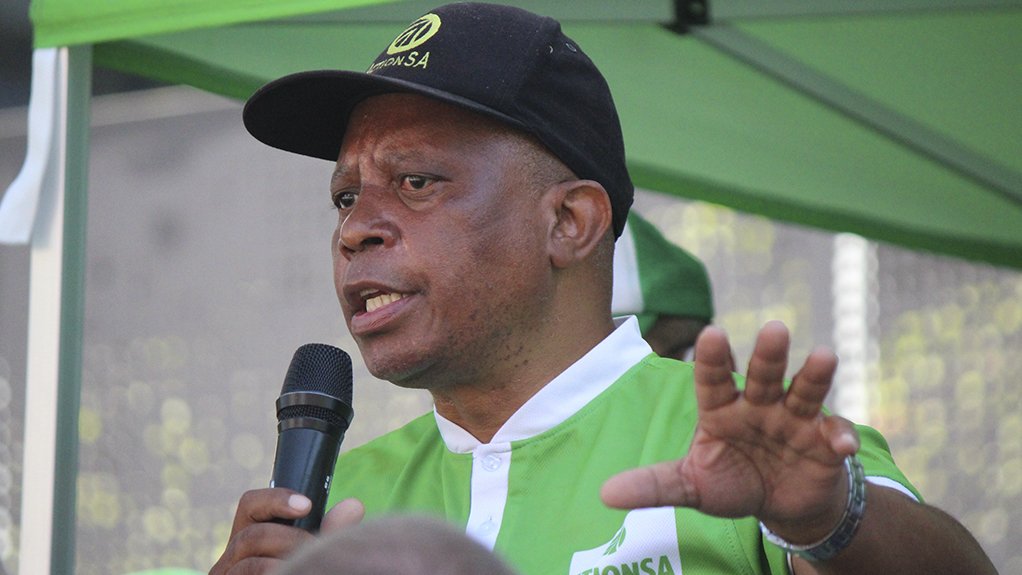The content on this page is not written by Polity.org.za, but is supplied by third parties. This content does not constitute news reporting by Polity.org.za.
Becoming Mayor of Johannesburg in 2016 meant confronting a depth of rot and neglect that no soul could have been prepared for, a decay that had driven the city of gold into severe distress. Corruption was endemic, service delivery had all but collapsed, and the once-proud inner city had descended into dystopian scenes.
Few believed that reviving Johannesburg was even possible. Every day brought another crisis demanding attention, but that reality meant it was impossible to lead a reactive administration that simply jumped from one emergency to the next. Rebuilding Johannesburg required one thing above all: a clear and credible plan.
Across the administration, everyone understood that at the centre of this fight was a military-style focus, innovative partnerships with the private sector and a clear recognition that our work, for however long the administration remained in power, was to restore dignity to residents.
One of the centrepieces of this fight was the Inner-City Revitalisation Project, a model of public-private partnership that serves as the benchmark for inner-city turnarounds. By releasing 154 abandoned buildings to the private sector for redevelopment, with an additional 37 factories identified, the project was set to unlock an estimated R32 billion in investment, create over 22 000 construction jobs and deliver nearly 14 500 affordable housing opportunities.
What set this initiative apart was that it merged ambition with reality, understanding that a municipal administration alone could not restore Johannesburg. Instead, the City sought to create an enabling environment where the private sector could invest with confidence.
Reflecting on this now, years later, matters because residents are increasingly concerned about the city’s decline and wonder if a revival is once again possible. The answer is yes, because that model proved what competent leadership can achieve even in the most challenging contexts.
It also matters because Johannesburg’s story is not confined to the city alone. Tshwane too was on the brink, requiring the very same revival and the same principles of focus, partnership and delivery are already reaping rewards there under ActionSA’s Dr Nasiphi Moya and the multi-party coalition.
Earlier this month, Tshwane held the first of its kind Investment Summit, aiming to attract R5 billion in investment. Far from being a symbolic gathering, the summit exceeded expectations, securing an investment pipeline of more than R16 billion.
It is no coincidence that these successes mirror the Johannesburg experience between 2016 and 2019. The parallels emerging nearly every day are striking. Just as we identified underutilised assets in Johannesburg and leveraged them, Tshwane has packaged strategic sites – from the Rooiwal and Pretoria West power stations to the Pretoria Showgrounds, Wonderboom Airport and more than thirty derelict inner-city buildings – for redevelopment.
The clarity of vision is also apparent. Johannesburg’s revitalisation was guided with military precision by a clear and credible 10-Point Plan and later the Diphetogo programme, a Sesotho word meaning “real change”, which focused attention on the most critical priorities.
Similarly, Tshwane has adopted the Tshwane Economic Revitalisation Strategy, identifying ten priority sectors, including automotive, agro-processing, tourism, the township economy, and research and innovation. In both cities, success has come not from vague promises but from disciplined planning and measurable targets.
And the results are already evident. Tshwane accounted for 71 000 of the 83 000 new jobs created in Gauteng between June 2024 and June 2025, with 57 000 created in the last quarter alone. This represents more jobs created than Cape Town, eThekwini, Ekurhuleni and Johannesburg combined, according to the latest Quarterly Labour Force Survey release.
That represents 85% of all new jobs in the province, demonstrating clear investor confidence in Tshwane’s turnaround, on top of the billions in investment already secured. This is not a city waiting for change but a city delivering it, exactly as was achieved in Johannesburg.
A clear plan makes all the difference. In Johannesburg, the Opportunity Centres and youth skills programmes, by the end of my administration, had supported more than 36 000 SMMEs and trained thousands of young artisans. In Tshwane, the Ithuba Youth Economic Development Programme is opening real opportunities for township entrepreneurs, graduates, and innovators ensuring that investment translates into dignity and a better life for ordinary residents.
What should be clear is that Johannesburg’s turnaround in just three years, along with Tshwane’s rising momentum, proves that with ethical leadership, a clear plan, and innovative partnerships with the private sector, municipalities can be revived even in the most desperate scenarios.
Even when faced with a R170 billion infrastructure backlog, as inherited in Johannesburg in 2016 or with Tshwane’s insufficient capital budget and inherited infrastructure challenges, both cities have shown that effective public-private partnerships, combined with strong leadership and a clear, credible plan, are not new concepts and have already been demonstrated.
If only the work in Johannesburg had not been disrupted by the removal of the administration by those opposed to the fight against corruption and the commitment to ensuring that the city serves all communities, particularly the poor, before the full implementation of the Inner-City Rejuvenation Plan.
Residents of Joburg should take from this a degree of certainty that Johannesburg can be revived. It has been done before and the progress in Tshwane stands as living proof of what is possible when municipalities are led by competent, ethical and focused leaders, which is exactly what this city so urgently needs.
Written by ActionSA President Herman Mashaba
EMAIL THIS ARTICLE SAVE THIS ARTICLE ARTICLE ENQUIRY FEEDBACK
To subscribe email subscriptions@creamermedia.co.za or click here
To advertise email advertising@creamermedia.co.za or click here











